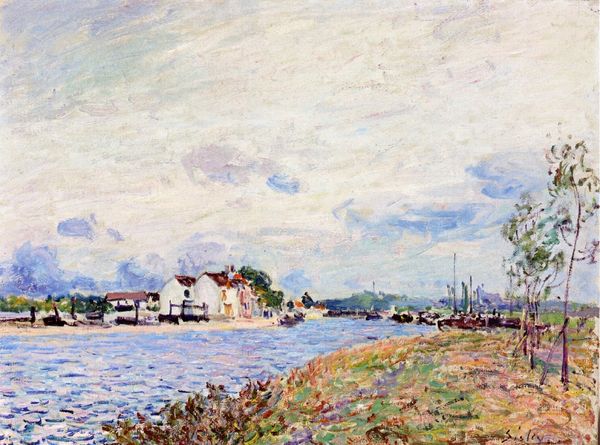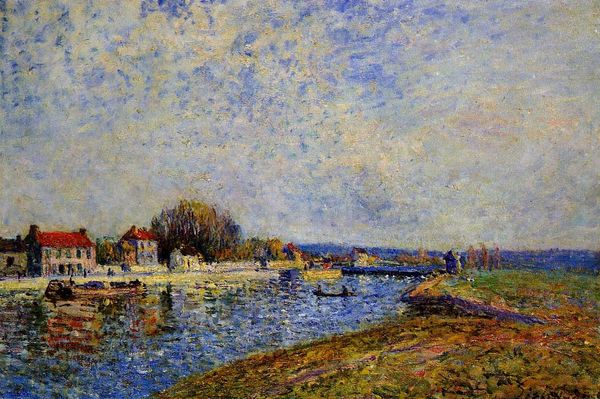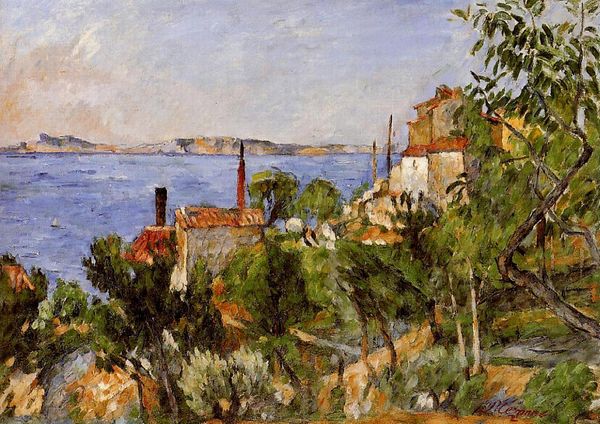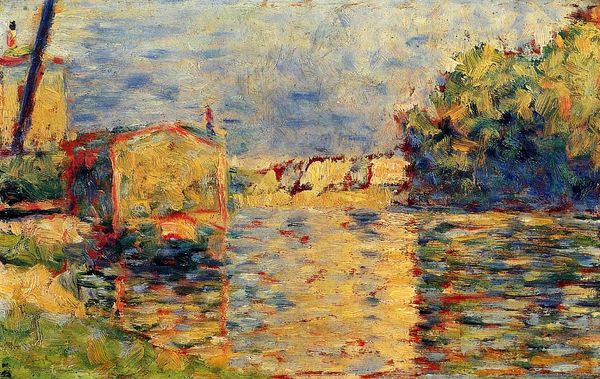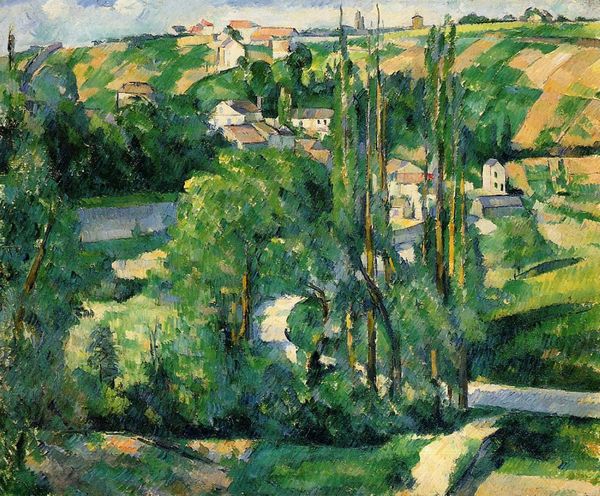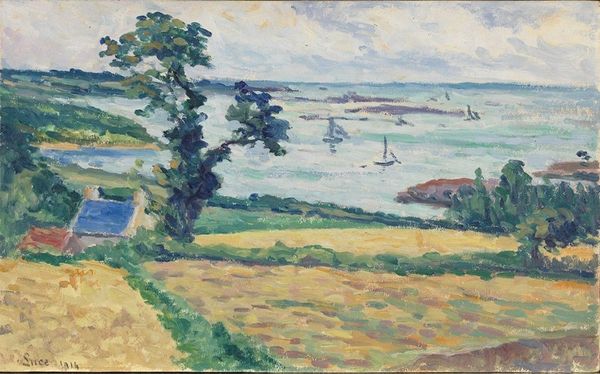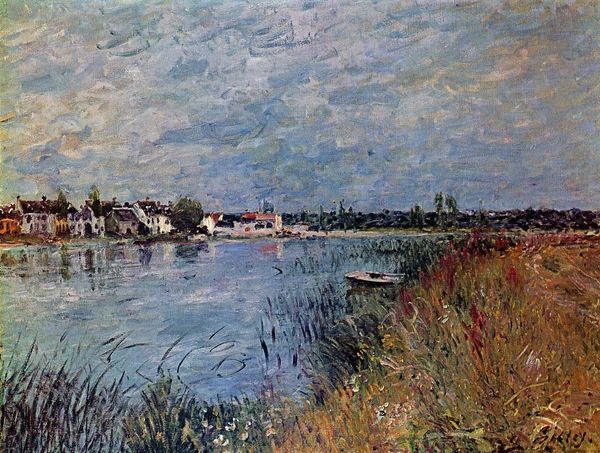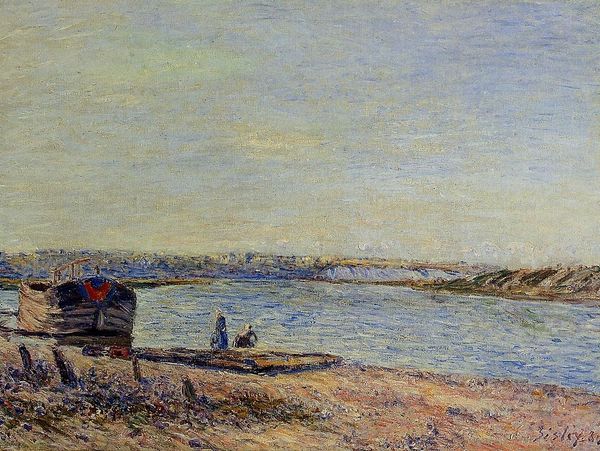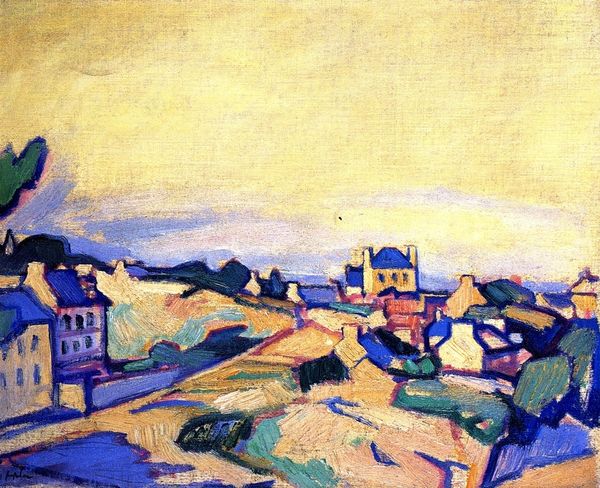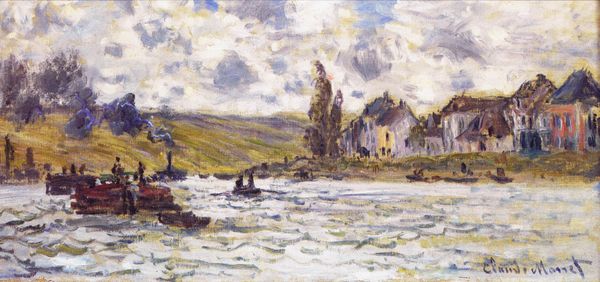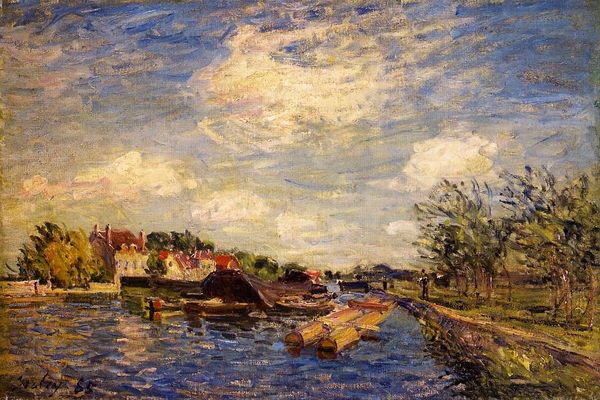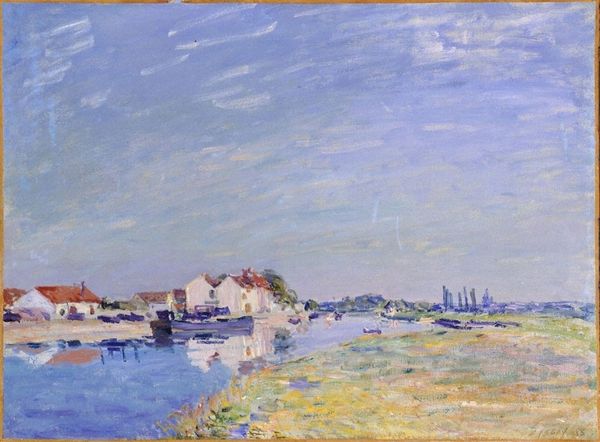
Copyright: Public domain
Curator: Here we have Paul Cézanne's "The Bay of l'Estaque and Saint-Henri," painted in 1879. What's your initial take? Editor: My first thought is how heavily textured it is, almost sculptural in places. You can practically feel the thickness of the oil paint and the artist’s deliberate application. Curator: Absolutely. Consider the sociopolitical climate of the time. The Impressionists were challenging academic art, but Cézanne takes it a step further, questioning the very nature of representation. It’s almost a proto-Cubist fracturing of space. Editor: The industrial elements are striking: those chimney stacks belching smoke juxtaposed against the natural bay. I'm thinking about the working-class presence in the frame and the impact on the physical landscape, reflecting a period of rapid industrial expansion. Curator: Precisely. The painting speaks to the anxieties surrounding industrialization and its impact on traditional landscapes. This area was heavily industrialized and his inclusion of these elements suggests a social commentary, perhaps on class disparities. Editor: The way he renders the water too is particularly interesting. Those broken strokes of blue, almost crude up close, resolve into a shimmering surface when viewed from a distance. How materials like oil paint can reflect this environment. Curator: Exactly! And his approach resonates with feminist theory, where perspective shifts depending on the viewer’s position, challenging notions of fixed and objective truth. It is a negotiation between modern realities, rapid change and classical landscapes. Editor: Thinking about Cézanne's method as a painterly labor: this reflects not just the scene but the means of production, too. The rough handling mirrors the rough labor of the port workers likely employed nearby. Curator: It's a poignant point to note. What began as an Impressionist plein-air sketch evolves into a deeper reflection of socio-economic conditions. Editor: Looking again, I now see the ways the material realities reflect class structures. It certainly shifts the whole experience. Curator: Yes. Cézanne's works constantly provide renewed layers for our reflection and conversation. Editor: Indeed, thank you for providing so much for me to consider through both context and materials!
Comments
No comments
Be the first to comment and join the conversation on the ultimate creative platform.
